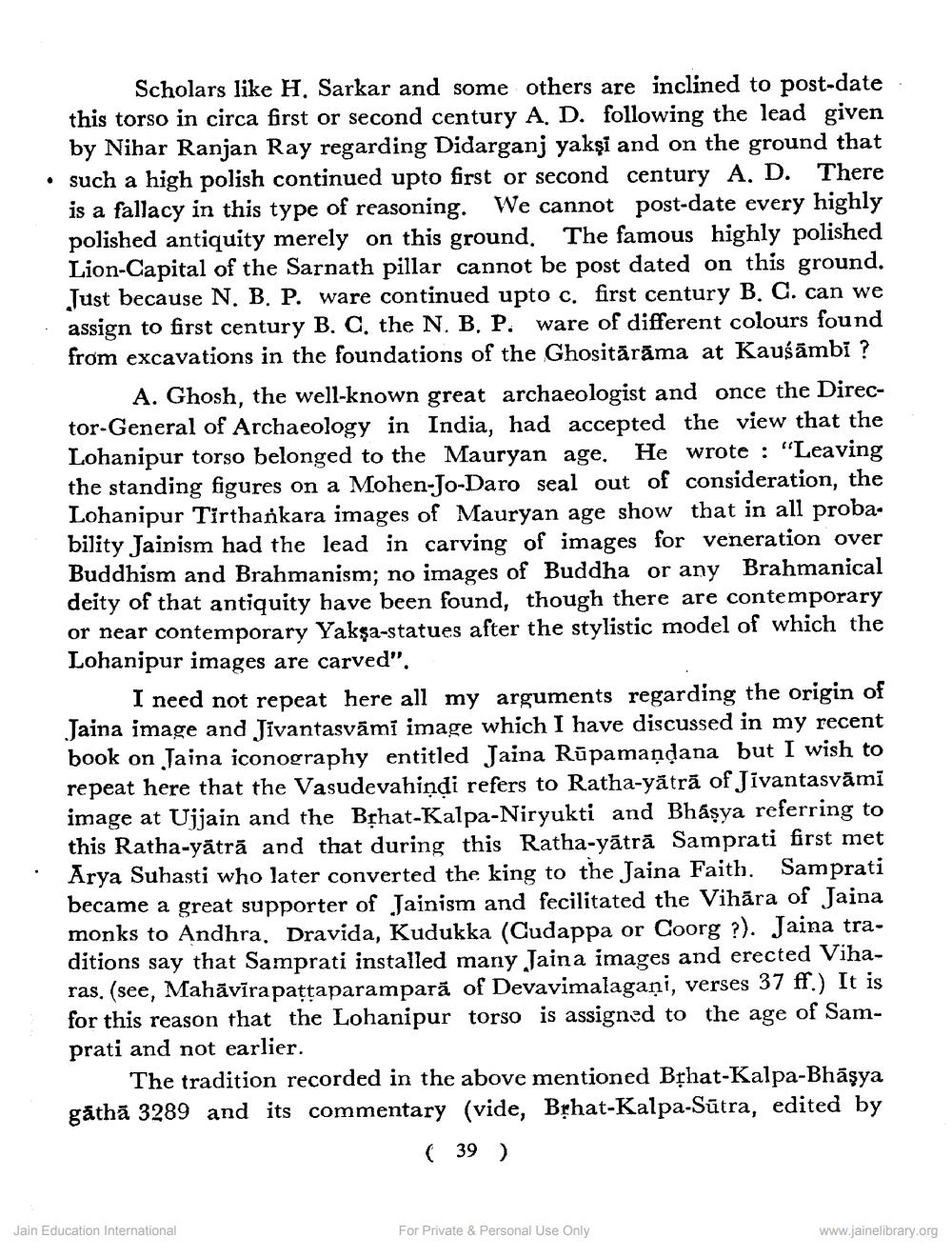________________
Scholars like H. Sarkar and some others are inclined to post-date this torso in circa first or second century A. D. following the lead given by Nihar Ranjan Ray regarding Didarganj yakşi and on the ground that such a high polish continued upto first or second century A. D. There is a fallacy in this type of reasoning. We cannot post-date every highly polished antiquity merely on this ground. The famous highly polished Lion-Capital of the Sarnath pillar cannot be post dated on this ground.
Just because N. B. P. ware continued upto c. first century B. C. can we · assign to first century B. C. the N. B. P. ware of different colours found from excavations in the foundations of the Ghositārāma at Kaušāmbi ?
A. Ghosh, the well-known great archaeologist and once the Director-General of Archaeology in India, had accepted the view that the Lohanipur torso belonged to the Mauryan age. He wrote : "Leaving the standing figures on a Mohen-Jo-Daro seal out of consideration, the Lohanipur Tirthařkara images of Mauryan age show that in all proba. bility Jainism had the lead in carving of images for veneration over Buddhism and Brahmanism; no images of Buddha or any Brahmanical deity of that antiquity have been found, though there are conten or near contemporary Yaksa-statues after the stylistic model of which the Lohanipur images are carved".
I need not repeat here all my arguments regarding the origin of Jaina image and Jivantasvāmi image which I have discussed in my recent book on Jaina iconography entitled Jaina Rūpamaņdana but I wish to repeat here that the Vasudevahindi refers to Ratha-yătră of Jivantasvāmi image at Ujjain and the Bșhat-Kalpa-Niryukti and Bhäşya referring to this Ratha-yātrā and that during this Ratha-yātrā Samprati first met Arya Suhasti who later converted the king to the Jaina Faith. Samprati became a great supporter of Jainism and fecilitated the Vihāra of Jaina monks to Andhra. Dravida, Kudukka (Cudappa or Coorg ?). Jaina traditions say that Samprati installed many Jaina images and erected Viharas. (see, Mahāvīra pattaparampară of Devavimalagani, verses 37 ff.) It is for this reason that the Lohanipur torso is assigned to the age of Samprati and not earlier.
The tradition recorded in the above mentioned Bțhat-Kalpa-Bhāşya gathā 3289 and its commentary (vide, Bșhat-Kalpa-Sūtra, edited by
(39)
Jain Education International
For Private & Personal Use Only
www.jainelibrary.org




